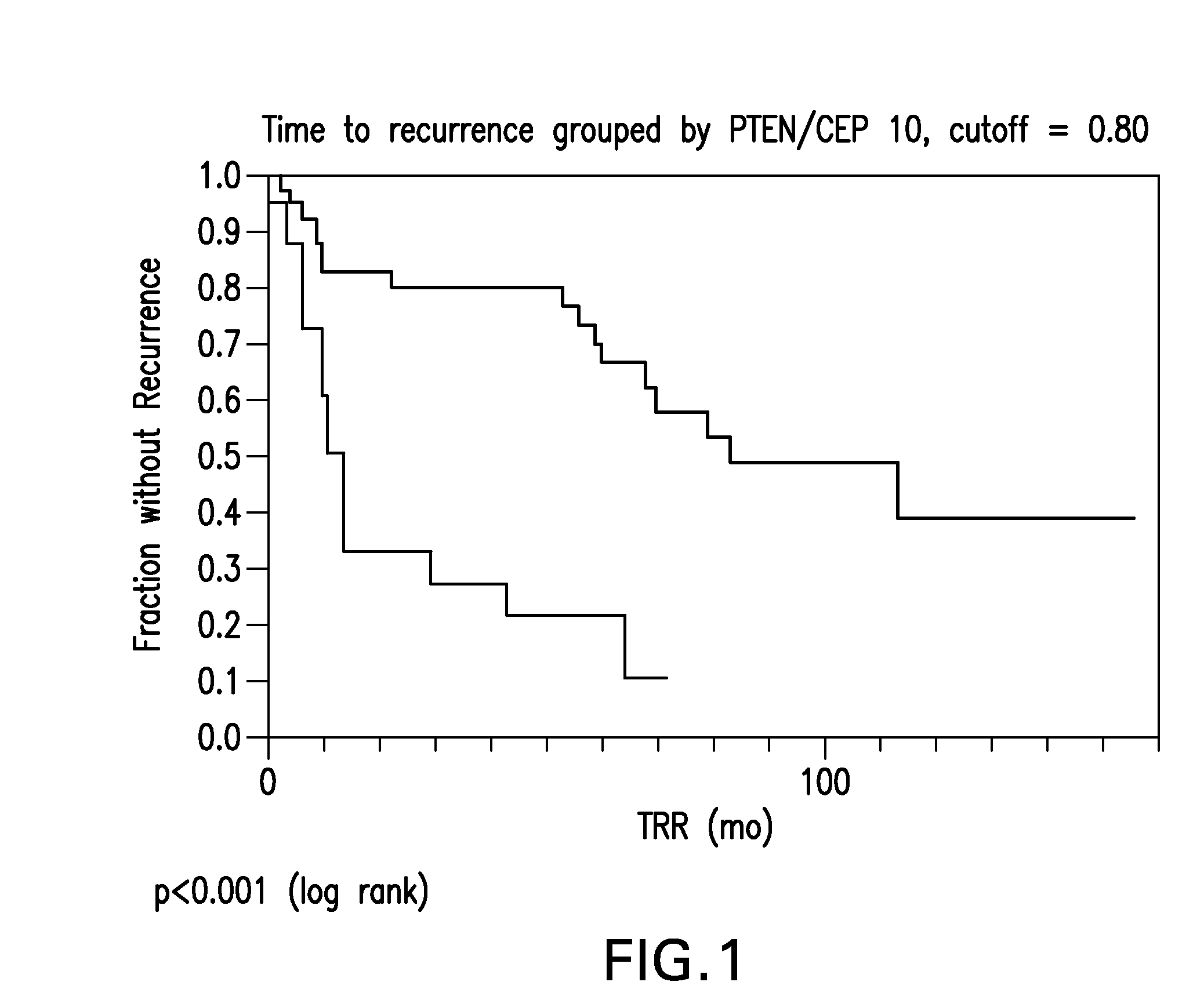Prognostic test for early stage non small cell lung cancer (NSCLC)
a non-small cell lung cancer and prognostic test technology, applied in the direction of microbiological testing/measurement, biochemistry apparatus and processes, etc., can solve the problems of inability to predict which patients will recur after surgery, significant percentage of patients will recur, more aggressive disease and death, etc., to improve the prognostic information, accurate identification of early-stage nsclc patients, and improved treatment selection
- Summary
- Abstract
- Description
- Claims
- Application Information
AI Technical Summary
Benefits of technology
Problems solved by technology
Method used
Image
Examples
examples
[0048]Specimens. Tissue specimens from 59 NSCLC patients were obtained from the archives of the Pathology Department of Rush University Medical Center (Chicago, Ill.). All patients had been diagnosed as Stage Ib or Stage II, and were treated with surgical resection without any follow-up or neoadjuvant chemotherapy. Chart review and study analyses were approved by the RUMC Institutional Review Board. The diagnosis of early stage NSCLC in the archival material was obtained from pathology reports. Times to recurrence of lung cancer were obtained from the patient charts. Of the 59 patients, 16 had recurrent lung cancer within one year, four had recurrent lung cancer between one and three years, 14 had recurrent lung cancer after 3 years and 25 never recurred (with 34.5 months minimum follow-up).
[0049]In Situ Hybridization. Copy number analyses were performed using a four probe FISH panel, described in and referred to as “Panel 2” in L. Morrison et al., “Effects of ER...
PUM
| Property | Measurement | Unit |
|---|---|---|
| temperatures | aaaaa | aaaaa |
| temperatures | aaaaa | aaaaa |
| fluorescent | aaaaa | aaaaa |
Abstract
Description
Claims
Application Information
 Login to View More
Login to View More - R&D
- Intellectual Property
- Life Sciences
- Materials
- Tech Scout
- Unparalleled Data Quality
- Higher Quality Content
- 60% Fewer Hallucinations
Browse by: Latest US Patents, China's latest patents, Technical Efficacy Thesaurus, Application Domain, Technology Topic, Popular Technical Reports.
© 2025 PatSnap. All rights reserved.Legal|Privacy policy|Modern Slavery Act Transparency Statement|Sitemap|About US| Contact US: help@patsnap.com

